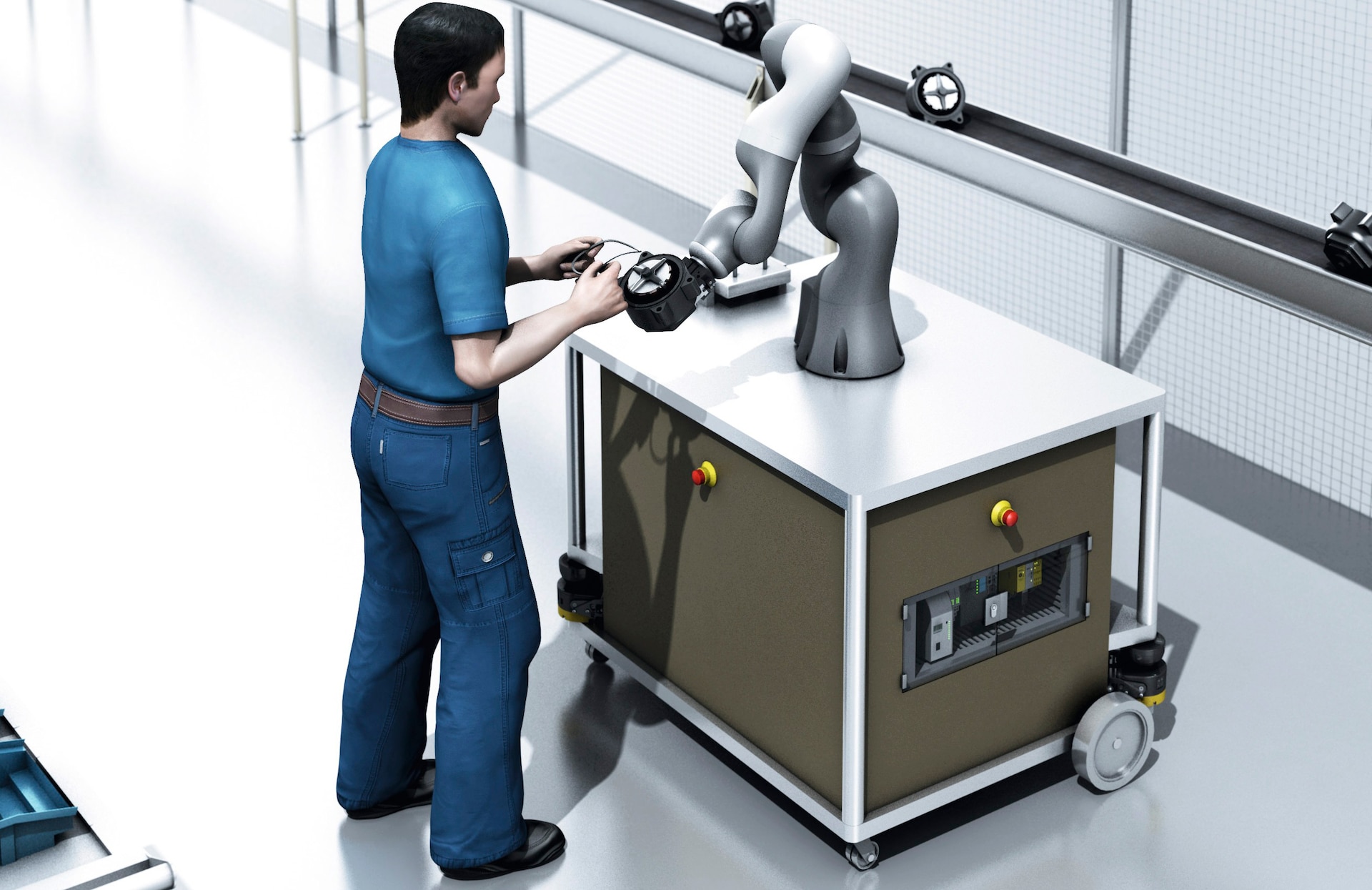The increasing individualization of products turns single units into a production batch that will be in demand with growing frequency in future. Production processes will have to be converted to cope with this. On the one hand, this means ensuring the necessary flexibility of production processes and, on the other hand, the creation of new safety concepts for new production situations will be vital.
Rigid production lines with chronologically defined production processes are a thing of the past. In future we will see large production halls with many more manufacturing cells that will enable a flexible throughput of goods being produced. The production of different workpieces, in accordance with “Batch Size 1”, makes this restructuring essential. Workpieces will be passed on directly to the next work step appropriate for them. In the networked Industry 4.0 factory, the production process itself will automatically guide the workpiece to the next free appropriate manufacturing cell, and thus implement production throughput that is as rapid as possible.
Dynamic production processes, however, not only mean flexibly determinable control of the individual cells, but also flexibility in the processing itself. The automated production environment comes up against its limits here: while robots can work precisely and unflaggingly, flexibility is not one of their strengths. Robots cannot act without taught-in patterns and parameters. One needs a creative computer center to achieve flexibility – the human brain.

Human-robot collaboration (HRC) is thus being increasingly focused on when planning production space. The advantages of each collaborator can be optimally exploited in semi-automatic manufacturing cells. While the robot is assembling, say, a heavy rigid element, the employee is supplementing this with the so-called “workpiece with tolerance”. The mounting of tubes and cables, for example, is a difficult, if not insoluble, task for a robot because they do not have any clearly recognizable and graspable contours.
Preparation must be very forward-looking for HRC to be economically efficient: involving comprehensive risk assessments of all the possible work steps and all the possible, even deliberate, operating errors; compliance with divergent international standards and safety regulations; and the acceptance of safety measures by all involved.
Risk identified – danger averted?
Another challenge regarding Batch Size 1 is the different workpieces produced per cell and the resultant activities to be assessed as high-risk. There will, of course, be differences due to cell layout and segmentation of the collaboration space. Sequential processing rules out, for example, that the human and the robot are in the same workspace at the same time, and thus requires less stringent safety measures. Simultaneous processing, on the other hand, describes the processing of the same object at the same time, and thus requires more comprehensive safety measures because the interaction potentials are very much greater. But here, too, it is necessary to distinguish between cells in which robot and human are working simultaneously, but in different areas, and those where there is real collaboration, i.e. the human and the robot are in immediate contact.
The “human” factor must not be underestimated during planning. Humans tend towards supposed “situational increases in efficiency” in our work processes: we take the shortest route because the robot is currently active in a different corner. We reach into the box “really quickly” so that we do not have to wait for an entire process to be completed. We keep safety barriers held open because we know that we will anyway have to go through them another three times… Human-robot collaboration will only work properly, however, when the changed work processes are accepted. Apart from all the technical calculations, therefore, communication with the workforce is a very decisive factor in future success. It is necessary to get rid of reservations and internalize safety-driven behaviors. The planning effort for HRC is undeniably high, but essential for the success and economic feasibility of future production scenarios.
New demands made of networked production
Further challenges await HRC in the Industry 4.0 scenario. The sensors integrated in the robots are continuously undergoing further development, and the growing abilities of robots naturally create new safety scenarios. In a networked factory, data-controlled process changes can naturally also affect other production steps. A digital twin of each production object enables improved comprehensibility of the individual production processes, and the flexible reaction to changes to the individual manufacturing cells.
Data networking also raises safety issues that reach beyond human-robot collaboration. Data security is a major topic in Industry 4.0. We will consider it next week in the same place.

